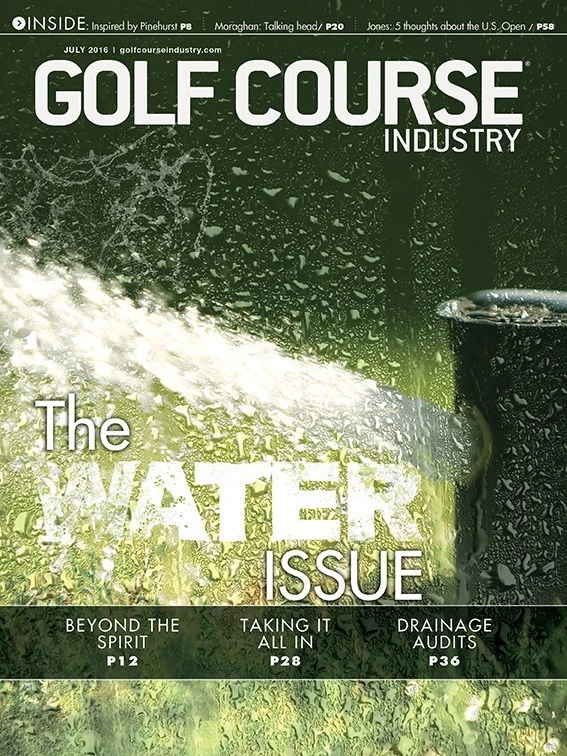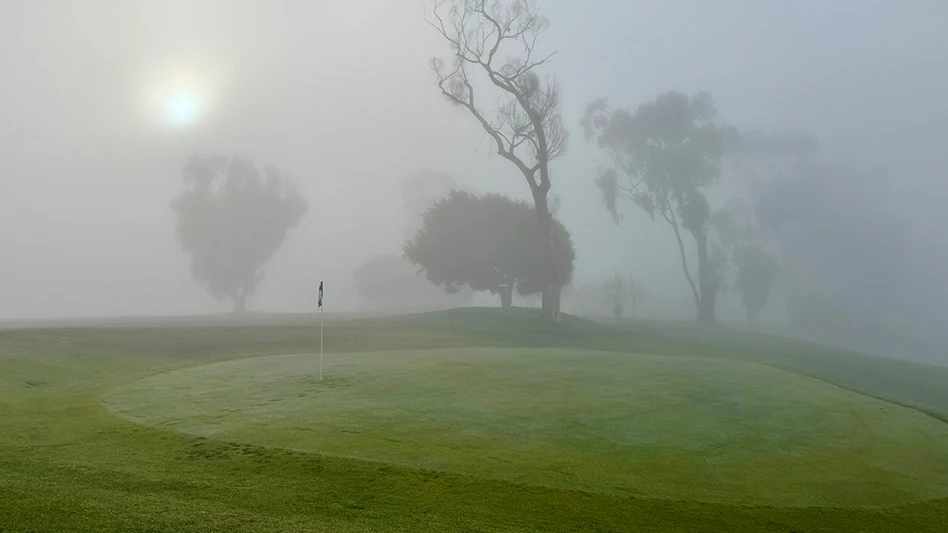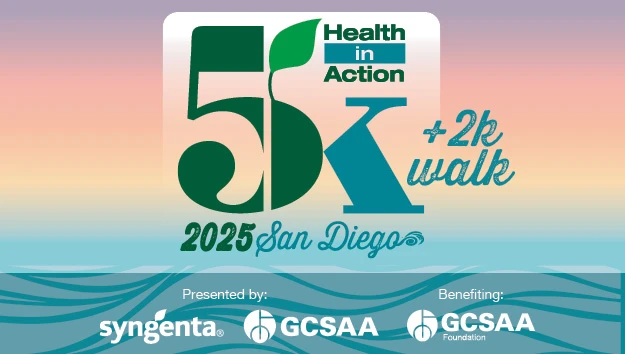
Coming out of dormancy in February and early March of this year, The Bear Trace at Harrison Bay in Harrison, Tenn., showed signs of a promising spring, says superintendent Paul Carter.
Then rain fell, causing water to sit on the course’s Champion Bermudagrass greens. A “black, slimy film” of algae began to “glass up” and integrate with the thatch, sand and nematodes.
Carter, who took over as superintendent of The Bear Trace in 2001, oversaw a no-till renovation from bentgrass to the Champion Bermudagrass in 2003, which reduced issues with thatch buildup.
However, he had never seen algae as troublesome as they were this year. “I guess what’s happened over time is, it’ll rain, we’ll get a little bit of algae and then we’ll put some sand on top of that and then some more algae and then some more sand on top of that,” he says.
Algae are common in golf course ponds and lakes, but they also thrive on putting greens and short-cut turfgrasses, particularly ones that are wet, shady, disease-prone or -infested, exposed or highly fertilized—or some hole-in-one concoction of these or other factors. Superintendents often tend to view algae as byproducts of turf conditions gone awry, but they can serve as root causes of numerous issues on course turf that require specific management techniques.
“That’s the way people think of algae most commonly, as sort of a secondary issue,” says Syngenta senior technical representative Dr. Lane Tredway. “I tend to believe, though, that algae can be more of a primary issue as well, in terms of competing with the turf for air and nutrients, perhaps even forming a layer in the thatch that inhibits the movement of water and air down through the soil profile.”
Algae that contain cyanobacteria, often termed blue-green algae, can produce toxins, Tredway says. These cyanobacteria have contaminated water systems and drinking water sources, so the potential exists that they could directly harm turf, he says.
Toxic cyanobacteria can also cause discoloration and negatively affect shoot and root impact, says West Bishop, algae scientist and water quality research manager at SePRO. “Aesthetics is another factor,” Bishop adds. “It looks bad, it feels bad, certainly it impacts how the ball can roll. Also, having the algae on the turfgrass could smother it, impede light penetration. Additionally, having that extra organic matter, depending on the type of algae you have, can impact infiltration of water, can cause more of that black layer, that anoxic zone as well, for water drainage.”
The application of chemicals that effectively control algae on turf, has shown turf quality improvement that surpasses the expected results of just killing the algae, Tredway says. “When we consistently apply a fungicide or another product to control algae, we consistently see improved turf quality, above and beyond what we can explain by control of other diseases or whatever other effects that product may have,” he says.
Products containing the active ingredients of either chlorothalonil or mancozeb are effective against turfgrass algae, says Dr. James A. Murphy, specialist in turf management at Rutgers University’s Department of Plant Biology and Pathology. Between the two chemicals, chlorothalonil has stronger suppressing characteristics, he says. Neither will completely rid turf of algae, but they will help suppress them and prevent them from worsening, he says.
The Bear Trace’s most successful treatment against the algae was not a chemical treatment, but rather to hose them off with a 1-inch syringe hose with a fire nozzle, and then to take a roller across them, Carter says. “Once we took our water hose and peeled the algae and the sand and the mat and everything and got that layer of sand and just funk, out of the top half-inch, three quarter-inch of the green, then they started draining right away,” he says.
East Lake Golf Club in Atlanta, Ga., also had issues on one green with algae and organic matter buildup resulting from a lack of drainage, says superintendent Ralph Kepple, who informed Carter about the hose method. After taking largely unsuccessful measures plugging and cutting out turf, Kepple and his crew contended with a “dam” that had formed at the bottom of the problematic green. “We had to lower that lip of the green so the water would drain off better,” he says.
Superintendents often have to improve drainage to fight turfgrass algae, Bishop says. “If you can find that balance of keeping the grass there and healthy and not having too many wet areas, too much water on it, to improving the drainage, for example, can help prevent proliferation of some of those turf algae,” he says.
When combatting algae, superintendents should follow a number of cultural practices, Tredway says. “Superintendents just want to make sure that they’re using those hollow tine and solid tine aerifications on a regular basis as needed—sand topdressing as well—to maintain good air and water exchange in the soil profile and also to minimize soil compaction,” he says.
East Lake’s MiniVerde Bermudagrass greens develop a significant amount of organic matter, so Kepple and crew frequently verticut for control. In the process, however, the turf canopy becomes exposed. “If you just happen to have verticut and then maybe get a week of cloudy, wet weather, something like that, then there’s tendency to get algae just because you’ve got an open canopy and that’s a good place for it to get started,” Kepple says.
The Bear Trace is a public course, which requires it to stay open more often than many private courses, so weekly verticutting and topdressing applications are not always met with typical aerification practices, Carter says. “At this golf course we’re open every day but Christmas and New Year’s,” he says. “We’re going 363 days out of the year.”
The course’s top inch of soil has bound up with more than 6 percent organic matter, more than twice the amount it should, he says. The sand, fine grasses and very fine grasses are over the USGA recommended rate, he says.
Algae always remain in the thatch layer of turf, Tredway says. “And really, a lot of our turf management practices create an ideal environment for algae to persist, with the routine irrigation, the regular fertilization, with nutrients like nitrogen and phosphorus,” he says. “We’re, to some extent, growing algae as well as growing turf.”
Using more labor is often a more effective treatment against algae than using less, Tredway says. Turf growth needs to outcompete that of algae, which is possible through both product application and practices such as improving drainage, avoiding overirrigation and maintaining good and balanced soil fertility, he says.
Now that The Bear Trace crew have removed much of the thatch and sand from the turf through improved drainage and spraying, firmness of the greens has increased, Carter says. “They’re good and firm right now,” he says. “They roll pretty good.”
The few remaining weak areas will continue to improve — as long as the weather does the same.
Patrick Williams is GCI’s contributing editor.
Explore the July 2016 Issue
Check out more from this issue and find your next story to read.
Latest from Golf Course Industry
- KemperSports and Touchstone Golf announce partnership
- PBI-Gordon Company hires marketing manager Jared Hoyle
- Mountain Sky Guest Ranch announces bunker enhancement project
- GCSAA names Joshua Tapp director of environmental programs
- AQUA-AID Solutions bolsters Sunshine State presence
- Escalante Golf acquires secluded Illinois course
- Tartan Talks 105: Nathan Crace and Todd Quitno
- Disease Discussion 24: Let the turf talk to you






